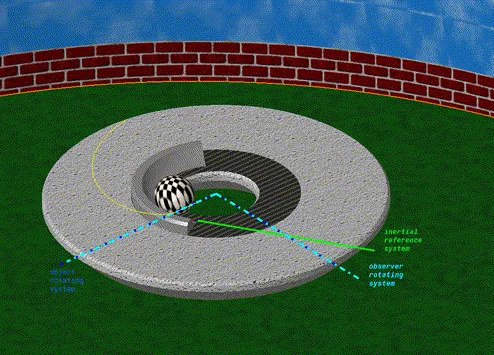
Hurricanes are awe-inspiring displays of nature’s fury—massive, spinning storms with the power to reshape coastlines and disrupt lives for thousands of miles. But while they regularly batter regions across the Atlantic, Pacific, and Indian Oceans, there’s one mysterious place on Earth where hurricanes never go: the equator.
Despite the equator’s warm tropical waters—ideal breeding grounds for hurricanes—no hurricane has ever crossed the equator, and here’s the fascinating science behind why.
The Coriolis Effect: Earth’s Hidden Force
The key to understanding this phenomenon lies in a force most people never notice: the Coriolis effect. Named after French mathematician Gaspard-Gustave de Coriolis, this effect is a result of Earth’s rotation. It causes moving air and water to deflect—to the right in the Northern Hemisphere and to the left in the Southern Hemisphere.

This invisible force is crucial to the formation and behavior of hurricanes. In fact, it’s what causes hurricanes to spin in opposite directions in each hemisphere: counterclockwise in the North and clockwise in the South.
But here’s the catch: the Coriolis effect is weakest at the equator—virtually non-existent right on the line. Without this force, storms can’t develop the organized, spiraling motion that defines a hurricane.
Why Hurricanes Need Spin to Survive
To form, hurricanes require three essential ingredients:

- Warm ocean water (above 26.5°C or 80°F),
- Low vertical wind shear, and
- A pre-existing spin or disturbance—provided by the Coriolis effect.
Without that third ingredient, even the warmest seas and calmest skies won’t help. The lack of spin near the equator means that tropical thunderstorms can’t evolve into cyclones. It’s as if the equator has an invisible barrier that storms can’t breach.
What Happens If a Hurricane Approaches the Equator?
If a hurricane were to drift toward the equator, it would begin to unwind and lose its strength. The Coriolis force weakens dramatically near the equator, robbing the storm of the momentum needed to maintain its structure. In most cases, the storm dissipates long before it can reach the zero-latitude mark.
Additionally, a phenomenon called beta drift causes tropical cyclones to naturally move away from the equator. In the Northern Hemisphere, they curve northward; in the Southern Hemisphere, they drift southward. This natural steering current reinforces the equator’s status as a hurricane-free zone.

A Rare Exception: Typhoon Vamei
In 2001, a near-miraculous exception occurred: Typhoon Vamei formed just 1.5 degrees north of the equator in the South China Sea. This was the closest a hurricane-strength system has ever come to the equator. But even this event didn’t defy the rule—it only skirted the edge.
Meteorologists agree that Typhoon Vamei was an extreme anomaly, made possible by a rare and complex blend of atmospheric conditions. It remains the outlier in more than a century of recorded storm data.
Will Climate Change Alter This Rule?
As global temperatures rise, scientists are watching closely to see if warmer oceans will allow hurricanes to form closer to the equator. So far, no evidence suggests they’ll ever cross it, but some models indicate stronger storms may develop nearer to the line than in decades past.
Still, the Coriolis effect won’t vanish with climate change. As long as the Earth spins, the equator will continue to be a natural hurricane barrier.
The Bottom Line: A Divided Storm World
Because hurricanes can’t cross the equator, the planet’s two hemispheres operate like separate storm worlds. A cyclone born in the North Atlantic will never threaten Australia. Likewise, a storm off the coast of Madagascar will never reach the Gulf of Mexico.

This division has significant implications for global forecasting, disaster preparedness, and climate modeling. It allows scientists to focus on regional weather patterns and make more accurate predictions.
So the next time you look at a map of swirling storms, remember—no hurricane has ever crossed the equator, and thanks to the powerful physics of our spinning planet, it probably never will.

Leave a Reply